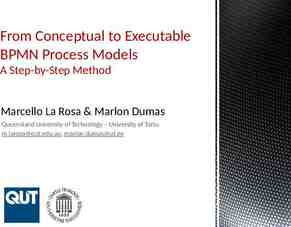EARLY CHILDHOOD INTEGRATED DATA SYSTEMS (ECIDS) Florida Children
38 Slides5.11 MB

EARLY CHILDHOOD INTEGRATED DATA SYSTEMS (ECIDS) Florida Children & Youth Cabinet Meeting April 14, 2017 Jeff Sellers, SLDS State Support Team 1

OVERVIEW OF ECIDS

WHAT IS AN ECIDS? Collects, integrates, maintains, stores, and reports information from early childhood programs Crosses multiple agencies within a state that serve children and families from birth to age 8 Includes data on the individual child, the child’s family, the classroom, the program/providers, and other services that provide comprehensive care and education for young children (What is an ECIDS, NCES 2014)

4

WHAT IS AN ECIDS?

WHAT IS AN ECIDS? 6

EXAMPLE RESULTS OF AN ECIDS Answer critical program and policy questions across agencies that provide services to children and families within a state For example: What are the education and economic returns on early childhood investments across state programs? Are we preparing all of our children for kindergarten, as a whole and by subgroups? What characteristics of programs are associated with positive outcomes for children? Distinct count of children Allocation of resources across agencies NOT: Replacing program data systems used for operational or key instructional decisions

FUNDING ECIDS RTT-ELC States ECIDS – Round 1 RTT-ELC States ECIDS – Round 2 RTT-ELC States ECIDS – Round 3 States Using SLDS for ECIDS – EC Specific (U.S. Virgin Islands) States Using SLDS Grant to Include EC in P-20 States Using Internal Resources for ECIDS ECCS Grant Toward ECIDS (Utah) FY15 SLDS Grantees with Early Learning Priority Area States Not Working Toward an ECIDS

ED FUNDING FOR EARLY LEARNING DATA SYSTEMS: SLDS AND RTT-ELC SLDS (ARRA, FY12, FY15) Many states began incorporating “P” into SLDSs early on According to SLDS program data, 21 states include a focus on building an ECIDS connected to K12/P-20 systems via SLDS In FY12, one territory was funded specifically to focus on building an ECIDS (Virgin Islands) In FY15, three states and one territory were funded to focus on Early Learning (American Samoa, Mississippi, Minnesota, Texas) RTT-ELC States could choose to build or enhance a coordinated early childhood data system (Selection Criteria E2) 16 out of 20 RTT-ELC (rounds 1-3) grantees have data systems included in their scopes of work

THE EVOLUTION Phase 1: 2011-2013 Phase 2 2013-2015 Planning- States began to plan Implementation Phase 3: 2016Present Phase 4: TBD Operational Evaluation and Data Use 0 states with 3 states with 0 states with operational systems operational systems Mores states with operational systems operational systems and examples of Approximately 31 Approximately 37 data use to inform Approximately 20 states planning states planning decisions states planning Over 20 with functioning, implemented data governance Over 25 with functioning, implemented data governance 10

HOW ARE STATES USING ECIDS DATA? Identifying and documenting the distinct count of children being served Support training/professional development and teacher qualifications/credentials Understand child outcomes Inform the quality rating/outcomes Support transitions (between C/619, PreK-K, etc.) Prepare children and families to be ready for school Using data to support enrollment and recruitment across agencies 11

Utah’s Early Childhood Integrated Data System 12

Division of Family Health and Preparedness TITLE V Maternal/chil Bureau of Child Deve d/infant health lopment Early Interventio n IDEA – Part C Office of Home Visiting Child Care Licensin g Early Childhoo d Utah 13

Governor’s State Advisory Council on Early Care and Education Early Childhood Comprehensive Systems Grant Section 642 B(b)(1)(A)(i) of the Head Start Act requires the Governor to designate or establish a council to serve as the State Advisory Council on Early Childhood Education and Care for children from birth to school entry. A program of the US Department of Health & Human Services, Maternal and Child Health Bureau. Early Childhood Utah In September 2011, Governor Herbert designated the existing Early Childhood Comprehensive Systems State Team to also function as the State Advisory Council on Early Care and Education, resulting in the creation of Early Childhood Utah.

The goal of Early Childhood Utah is to: Support Utah parents in their efforts to ensure that their children enter school healthy and ready to learn. 15

Early Childhood Integrated Data Systems Part B Special Ed Pre-K The data integration system will facilitate the use of data to address five broad policy questions: Part C Early Interventio n 1. Head Start Public Pre-KTitle One ECIDS Question s that cannot be answere d with any one system Child Care Home Visiting 2. 3. 4. 5. Are children birth to age 5 on track to succeed when they enter school? Which children and families are and are not being served by which programs and services? What characteristics of programs are associated with positive outcomes for which children? What are the education and economic returns on early childhood investments? How is data being used now and how will data be used in the future to inform policy and resource decisions?

Utah ECIDS High Level Overview EARLY CHILDHOOD UTAH Utah Data Alliance P-20W Vital Vital Records Records (birth/death), (birth/death), Hearing Hearing Detection, Detection, Immunizations Immunizations PostPostsecondary secondary All All Payer Payer Claims Claims Database: All All Database: Insurances Insurances Home Home Visiting Visiting & & Early Early Intervention Intervention (Idea (Idea Part Part C) C) Child Child Care, Care, ASQ, Help ASQ, Help Me Me Grow, Grow, United United Way Way Community Community Head Head Start Start Programs Programs ECIDS ECIDS K-12 K-12 Workforce Workforce Non Non PII PII UID DOHDOHECIDS ECIDS MPI/ MPI/ PII PII P-20W P-20W Data Data Warehous Warehous e e Non Non PII PII WIC,TANF, WIC,TANF, SNAP, SNAP, Children Children w/ w/ Special Health Health Care Care Special Needs Needs Early-Childhood Researchers Education Researchers 17

Utah’s ECIDS- how does it work? ECIDS uses Axon technology (MDSC) within the ECIDS MPI data system for data collection, identity correlation and routing. The ECIDS MPI system processes personally identifiable information (PII) to uniquely identify children across multiple data sources. Non-PII data is collected and sent directly (encrypted) to the ECIDS database from the ECIDS/MPI system. ECIDS Phase I reports: distinct counts, program crossover, sequence of services. 18

STATE SPOTLIGHT: MINNESOTA’S EARLY CHILDHOOD INTEGRATED DATA SYSTEM-HTTP://ECLDS.MN.GOV/ 19

DATA COLLECTION & SYSTEM Dept of Educatio n Dept of Human Services K12 Enrollment & Assessment Early Childhood Special Education ACCESS (English Learners) EE Student Kindergarten Entry Profile Teacher licensing and organization data Child Care Assistance Program TQRIS (“Develop”) TANF (“MFIP”) SNAP Birth Records Dept of Health Web Site Linking and Deidentification How many children are served? In what programs are children participating? In what type of quality program do children participate? What are child outcomes over time? 20

SYSTEM & SHARED ARCHITECTURE 21

EARLY RESULTS: PROGRAM PARTICIPATION (TEST DATA ONLY) Test Data Only 22

HOT OFF THE PRESS! New Early Learning IPB Report on Integrated Data Check it out! HSS https://www.acf.hhs.gov/sites/default/files/ecd/intergration of early childhood d ata final.pdfLink Education http://www2.ed.gov/about/inits/ed/earlylearning/index.html?src rn&utm content &utm medium email&utm name &utm source govdelivery&utm term Recently released! Highlights ECIDS progress in 8 states Discusses key considerations for early childhood data integration Links to related federal resources and technical assistance 23

STATE EXAMPLE RESOURCES State Spotlight: North Carolina’s Early Childhood Integrated Data System (ECIDS) https://slds.grads360.org/#communities/pdc/docum ents/10161 State Spotlight: The Utah Early Childhood Statewide Data Integration Project https://slds.grads360.org/#communities/pdc/docum ents/10001 State Spotlight: Minnesota’s Early Childhood Integrated Data System https://slds.grads360.org/#communities/pdc/docum ents/9763 State Spotlight: Delaware’s Early Learning Insight Dashboard 24

Early Childhood Interagency Data Governance 25

The Roles of Within Sector & Cross Sector Governance EC Data Governance DOH DOH Data Data Governanc Governanc e e SEA SEA Data Data Governanc Governanc e e HHS HHS Data Data Governance Governance DOL DOL Data Data Governance Governance Statewide perspective Determine integration and data element authority Driven by state policy Other Other EC EC Data Data Program centric Determine data elements, definitions, collections Driven by program essential questions 26

Differences between Data Gov. & Stakeholder Engagement Membership Data governance: Representatives (leadership, program, and IT staff) from each agency/program contributing data to an early childhood integrated data system (ECIDS) Data Stakeholders Governance Stakeholder engagement: Users of the ECIDS data and those directly or indirectly affected by its use (including data governance members) 27

EC Centralized ECIDS Presentation Layer: Reports, Data Marts, Datasets Me tad ata EC Data System Student Student Identities Identities INTEGRATION INTEGRATION MATCHING MATCHING Child Child Care Care K12 Head Head Start DataStart State State PreK PreK Early Early Intervention Intervention –– Part Part B B Early Early Intervention Intervention –– Part Part C C Home Home Visiting Visiting Other Other Data Data 28

ECIDS TOOLKIT OVERVIEW

The ECIDS Toolkit is now available online at https://slds.grads360.org/#program/ecids -toolkit

ECIDS GUIDE OUTLINE Purpose and Vision for the ECIDS Planning and Management Stakeholder Engagement Data Governance System Design Data Use Sustainability

PURPOSE OF THE ECIDS TOOLKIT Provide a method for states to assess progress in developing an ECIDS Enhance the capacity of states working to integrate data across early childhood to understand the key pieces of an ECIDS and how it connects with the states’ other integrated data system efforts so they can lead or actively participate Provide resources and state examples to help build better systems of services and programs that will improve outcomes for young children and families Offer practical suggestions for each step in the overall process of integrating early childhood data and connecting that data to an SLDS

ECIDS TOOLKIT: KEY POINTS The ECIDS Toolkit is not meant to be used in one way. It is intended to help states with their planning and development processes. The ECIDS Toolkit was designed to be flexible so that states can use it to their best advantage. Content can be accessed in different ways (downloadable in sections or in its entirety) and at different levels (drilldown to elements of quality). The ECIDS Toolkit provides easy access to additional resources.

ECIDS SCALE FOR SELFASSESSMENT Based on the feedback from the group, the final scale was as follows:* *The scale can be used at either the indicator or element level based on the state’s goal.

DISCUSSION What value would integrating EC data have for Florida? Who would be interested in integrated EC data (stakeholders)? Is there any current state statutes encouraging the integration of EC data? 35

DISCUSSION What barriers do they see in integrating EC data in FL? (e.g. tech challenges/Policy challenges) How could the barriers be overcome? What are some next steps (6 months)? Further discussion about data governance, tech models, data use examples 36

RESOURCES ECIDS Toolkit https://slds.grads360.org/#program/ecids-toolkit What is an ECIDS? https://slds.grads360.org/#communities/pdc/docume nts/4441 Planning for Early Childhood Data Use https://slds.grads360.org/#communities/pdc/docume nts/2635 Strategies for Engaging Early Learning Stakeholders https://slds.grads360.org/#communities/pdc/docume nts/5908 37

RESOURCES Answering Key Questions with an Early Childhood Data System https://slds.grads360.org/#communities/pdc/docum ents/4798 Identifying SLDS Users and Their Information Needs https://slds.grads360.org/#communities/pdc/docum ents/2753 Communicating Early Childhood Integrated Data System (ECIDS) Design: Developing Presentation and Conceptual Diagrams https://slds.grads360.org/#communities/pdc/docum ents/8620 38






